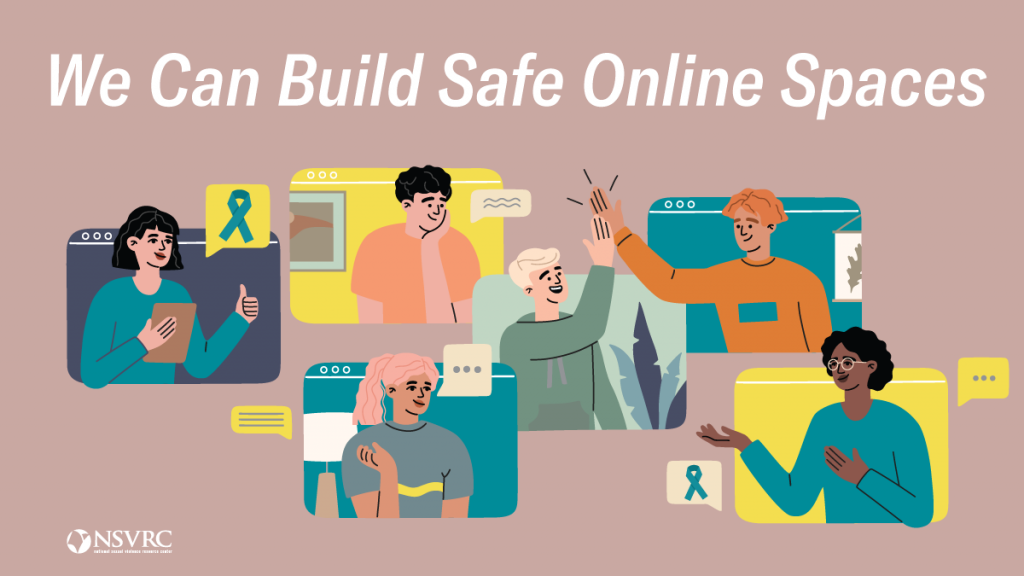April is Sexual Assault Awareness Month (SAAM) and is dedicated to bringing awareness to sexual violence in the United States. Organizations across the nation aim to educate communities about sexual assault facts, engage in discussions on prevention, and identify safe places and resources for victims of sexual violence.
Let’s begin by looking at a few statistics*:
- Based on data from the survey, it is estimated that 734,630 people were raped (threatened, attempted, or completed) in the United States in 2018.
- More than 1 in 3 men (34%) have experienced verbal sexual harassment. The most common form of verbal sexual harassment for all men was being purposely misgendered or called a homophobic or transphobic slur.
- The 2019 Campus Climate Survey on Sexual Assault and Misconduct prepared for the Association of American Universities, updating a 2015 study of the same name, found sexual assault and misconduct at 33 of the nation’s major universities was almost one in four undergraduate women.
- 13%–51% of women meet diagnostic criteria for depression following sexual assault; 23%–44% experience suicidal ideation with 2%–19% attempting suicide; dependence on alcohol can be seen in 13%–49%; and 28%–61% report the use of other illegal substances.
- In a 2015 study of 390 sexual assault victims who sought services at an urban rape treatment center, 45.7% of cases with male victims and 28.1% with female victims involved the victim being given drugs against their will or without their consent.
*Source: https://www.nsvrc.org/statistics
Naturally, these numbers are so much more than a measurement on a pie chart or graph, these are people whose safety was stolen from them. They are parents, grandparents, sisters, brothers, cousins, children, and someone’s dear friend. This is what makes this month so important and vital to the growth and safety of our communities.
April 2021 marks the 20th anniversary of SAAM with a theme of “We Can Build Safe Online Spaces.” This theme addresses the increase in bullying and abuse taking place online with the assailant relying on the protection of anonymity. “Just over the past few decades, terms such as ‘sextortion,’ ‘revenge porn,’ and ‘doxxing’ have been added to the public lexicon. Other examples of common abusive behaviors online include child pornography, online harassment, or posting unsolicited explicit images” (National Sexual Violence Resource Center, 2021a). The impact on the mental health and feeling of security (or lack thereof) for the victim can be debilitating, and occasionally, this victimization is continued in-person.
To ensure we’re all well informed, here are some forms of online sexual violence (with definitions for a few):
- Sextortion: “the broad category of sexual exploitation in which abuse of power is the means of coercion and can be coupled with the threatened release of sexual images or information” (National Sexual Violence Resource Center, 2018)
- Revenge Porn: “Sharing private images or videos without the consent of everyone involved” (National Sexual Violence Resource Center, 2021b)
- Doxxing: “refers to ‘dropping docs’ — is when an internet user targets a specific person or group, finds personal information about them, and then publishes it online” (Gebel, 2020)
- Pornographic Zoom-Bombing: “Sharing porn in spaces where everyone has not consented to view it” (National Sexual Violence Resource Center, 2021b)
- Sending unwelcome/hateful sex-based comments
- Requesting partners/strangers to send nude/sexual photos, videos, or stream
- Engaging in sexual acts on webcam without consent from everyone involved
The National Sexual Violence Resource Center encourages everyone to take this month to learn more about how to practice consent online, how to keep children safe from victimization (child grooming can often take place online), and to help build and nurture safe online communities. To learn more about this year’s theme visit the National Sexual Violence Resource Center site.
Bell Library will also feature a Denim Day/Sexual Assault Awareness Month display in the 2nd floor gallery, located just outside of the elevators. The exhibit is organized and created by the Office of the Associate Dean of Students.
If you have been a victim of sexual assault, you are not alone and do not have to face it alone. Nationally, you can visit the Rape, Abuse & Incest National Network (RAINN) website for assistance and resources such as details on what to expect when reporting and connecting with someone to seek further support. You can also reach out locally to the University Counseling Center.
For additional resources, visit: prevention resources and/or survivor resources.



